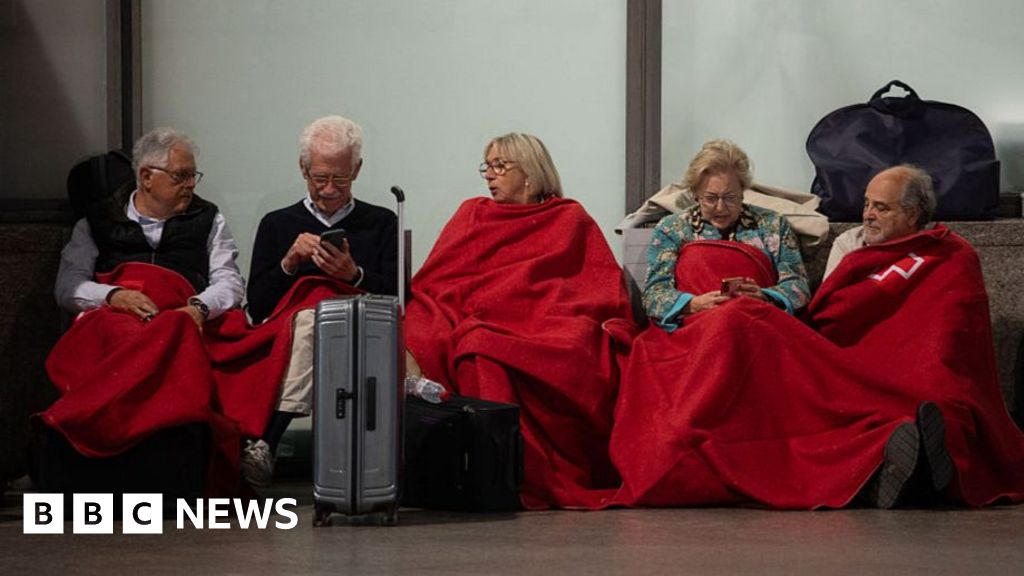The island of Helgoland plays an almost mythological role in the history of quantum mechanics
Shutterstock/Markus Stappen
I have been to more scientific conferences than I care to count, but a recent meeting held on the island of Helgoland to celebrate the centenary of quantum mechanics is one of the strangest – in a good way.
This tiny German island, barely more than a kilometre long and far out in the North Sea, has the air of a down-at-heel coastal resort: the sea less than inviting even in the summer, the little streets full of cheap gift shops and the smell of fish and chips and ice cream. Now imagine that at every turn you bump into Nobel laureate physicists, inventors of quantum information theory and experimentalists at the cutting edge of quantum technologies, fresh from discussing their work in the town hall, next to the crazy-golf course. It is all rather wonderful.
The reason we are here is revealed on a rock on the cliff path. It bears a bronze plaque (see below) that suggests this is where physicist Werner Heisenberg, on an excursion to seek relief from his hay fever in 1925, invented quantum mechanics. Sadly, that isn’t really true – at best Heisenberg sketched out some ideas here that only subsequently did he and others develop into a full quantum theory. And the version we are more familiar with today was unveiled in early 1926 by Erwin Schrödinger, which introduced the wave function as a way of predicting the evolution of a quantum system.
All the same, if you are going to assign a centenary to quantum mechanics, this is the obvious year to choose. And regardless of how much of the story of Helgoland was due to Heisenberg’s self-mythologising – he wrote the account of his breakthrough there only many years later – the remote island is a rather special place to hold the party.
And what a party it is. It is hard to imagine such an eminent cast of quantum physicists being assembled again. There are four Nobel laureates here: Alain Aspect, David Wineland, Anton Zeilinger and Serge Haroche. Between them, they established the reality of the strange features of quantum mechanics, such as the way the properties of one particle can seem to be instantaneously contingent on what we measure for a second, “entangled” particle, no matter how far away it is. They also created some of the techniques for manipulating individual quantum particles that are now being used to build quantum computers.
But here’s the thing. I suspect these grand old(ish) men would agree with me that it is the younger generation that now holds the best hope for making some sense of what quantum mechanics really means, and for turning its notoriously counter-intuitive nature into new technologies and a new understanding of nature. Quantum mechanics is notorious for admitting many different interpretations of what the mathematics of the theory tell us about the real world, and most of the old guard have already taken a stand and seem unlikely to shift their views.

A plaque on Helgoland commemorates Werner Heisenberg’s invention of quantum mechanics
Philip Ball
That impasse was evident in a panel discussion on the first evening in which Aspect, Zeilinger and Gilles Brassard, a founder of quantum cryptography from the University of Montreal, Canada, pronounced with equal confidence on the fundamental meaning of quantum mechanics while being in direct contradiction with one another.
To be fair to these veterans, their ideas were formed in the face of scepticism (or worse) from their peers about the value of even thinking about such “foundational” questions. They emerged from the era of “shut up and calculate” – the phrase coined by US physicist David Mermin to describe how it was deemed bad form to wonder what quantum mechanics meant, one’s duty being merely to solve the Schrödinger equation. It isn’t surprising that they had to cultivate robust views and thick skins.
The younger researchers seem less inclined to be dogmatic about quantum foundations, and perhaps more ready to pick up and put down different interpretations depending on how useful they are for the problem at hand. A bit of many worlds here, a bit of the Copenhagen interpretation there, all as tools for thinking with rather than statements about reality.
The new generation is also less relentlessly male. For example, Vedika Khemani at Stanford University, California, told the meeting about the rich and beautiful connections between ideas in condensed-matter physics and quantum information, a connection that takes us from the storage of information on magnetic tape in the 1950s to the error-correction techniques essential for quantum computation today.
Harnessing quantum mechanics to build new technology is increasingly in vogue, but the theorists aren’t slacking either. Flaminia Giacomini at the Federal Institute of Technology in Zurich, Switzerland, was one of several speakers who felt we might get a clearer picture of what quantum mechanics means if we can reconcile it with gravity, by seeking a marriage of the discrete and granular quantum world with the smooth and continuous world required by general relativity, usually by quantising gravity.
You might have thought this is all about exploring untestable and barely fathomable ideas in string theory, one attempt to create such a union. But the truth, as Giacomini said, is that “we have no experimental evidence that we should quantise gravity” – we don’t even have empirical reasons (even if there are plenty of theoretical ones) why gravity has to be a quantum force at all, as the other three forces of nature clearly are.
The exciting thing is that this, at least, is something we can hope to test in the near future, for example by seeing if we can entangle two objects solely through their gravitational interaction. The challenge here is that the objects must be big enough to produce a significant gravitational force, but small enough to show quantum behaviour: nanoparticles of, say, silica or diamond might do the trick. Several speakers have expressed confidence that we will meet that challenge within a decade or so.
For me, a key revelation of the meeting is that so many strands of quantum theory and experiment are now entangled. Pull on one, and you affect others. Understand more about quantum gravity from exquisitely sensitive experiments on trapped particles and you might go into the black hole information paradox and emerge with new ideas about error correction for quantum computing or fresh insight into twisty “topological” quantum states.
It seems possible that work in any of those fields might even finally help us understand the old questions that troubled Heisenberg and his colleagues: what happens when we make a measurement on a quantum particle, and how does it turn quantum into classical? At any rate, saying that a century later we are still wrestling with those old questions is the wrong way to see it. We have discovered instead that quantum mechanics is far richer, more useful and more astonishing than its founders could ever have guessed.
Topics:
Source link
















